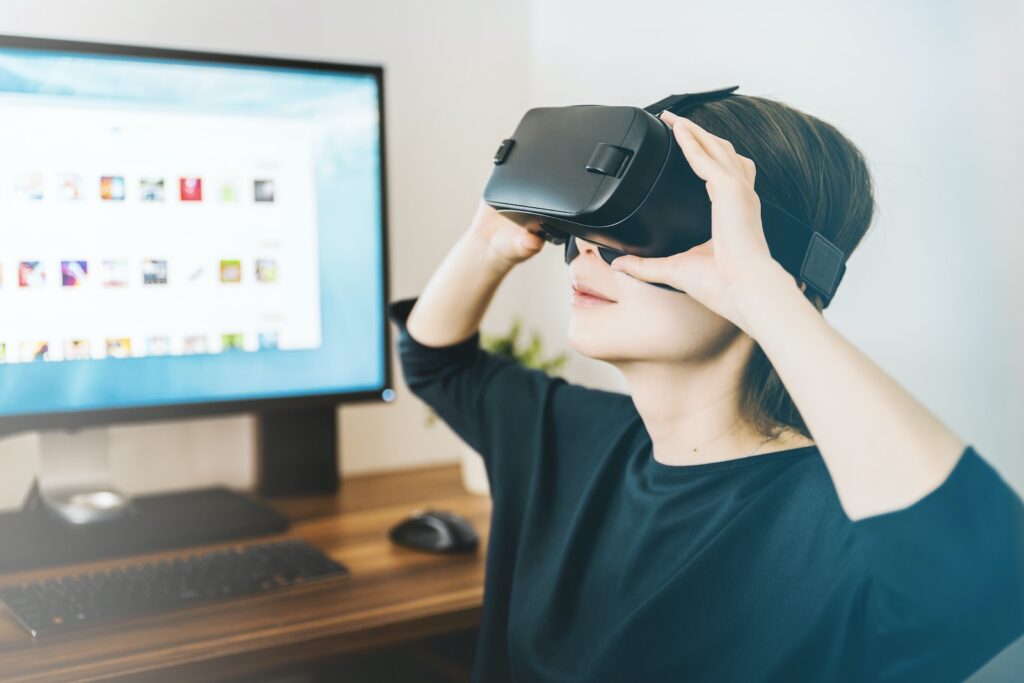
3DOF and 6DOF are terms used to describe the ‘degree of freedom’ in virtual reality (VR) systems.
3DOF refers to “3 Degrees of Freedom”, which means that the VR headset can track three types of movements: pitch, yaw, and roll. These movements allow the user to look around the virtual environment but do not allow the user to move physically within the environment.
On the other hand, 6DOF stands for “6 Degrees of Freedom”, which means that the VR headset can track six types of movements: pitch, yaw, roll, as well as heave, sway, and surge movements. This allows the user to physically move within the virtual environment and experience a greater sense of immersion.
What is ‘pitch’, ‘yaw’, and ‘roll’?
Pitch, yaw, and roll are the three rotational degrees of freedom used to describe the orientation of a rigid body in three-dimensional space.
Pitch refers to the rotational movement around the X-axis, which is the axis that runs from left to right. When you pitch your head up or down, you are rotating along the X-axis.
Yaw refers to the rotational movement around the Y-axis, which is the axis that runs from front to back. When you turn your head left or right, you are rotating along the Y-axis.
Roll refers to the rotational movement around the Z-axis, which is the axis that runs from top to bottom. When you tilt your head to one side or the other, you are rotating along the Z-axis.
These rotational degrees of freedom can be used to describe the basic 3DOF orientation of a VR headset, allowing the user to look around the virtual environment and experience a greater sense of immersion.
And what is ‘surge’, ‘heave’, and ‘sway’?
Surge refers to the linear movement along the X-axis, which is the axis that runs from left to right. When you move forward or backward in a VR environment, you are moving along the surge axis.
Heave refers to the linear movement along the Y-axis, which is the axis that runs from front to back. When you move up or down in a VR environment, you are moving along the heave axis.
Sway refers to the linear movement along the Z-axis, which is the axis that runs from top to bottom. When you move from side to side in a VR environment, you are moving along the sway axis.
These linear degrees of freedom, together with the rotational degrees of freedom (pitch, yaw, roll), make up the 6 Degrees of Freedom (6DOF) that are used to describe the full range of motion in a VR system.
6DOF provides a more immersive experience by allowing the user to physically move within the virtual environment and experience a greater sense of presence. This can be particularly important for VR games, where movement is a critical aspect of gameplay.
With 6DOF, the user can interact with the virtual environment in a more natural and intuitive way. For example, they can walk or fly to explore different parts of the environment, reach out to grab objects, or duck to avoid obstacles.
6DOF can also be useful for training purposes, as it allows the user to experience complex movements and scenarios in a simulated environment. For example, 6DOF VR can be used to train surgeons, pilots, or soldiers, providing a safe and controlled environment to practice procedures and techniques.
And finally, 6DOF can also enhance the design and visualization process, as it allows architects, engineers, and product designers to physically move around and interact with their designs.
True 6DOF experience in VR known as “Room-scale”, where the user can physically move around within a defined physical space. Room-scale VR requires a VR headset and motion-tracked controllers, and it allows the user to walk, run, jump, or even crouch within the virtual environment. The physical space defined for the VR experience is referred to as the “room-scale play area”
To set up a room-scale VR experience, the VR headset and motion controllers must be properly configured and calibrated to the physical space. This typically involves setting up tracking cameras and defining the boundaries of the room-scale play area. The VR system will then track the user’s movements within the defined physical space and translate them into the virtual environment.
So, understanding about “Degree of Freedom” and “Room-scale” will help you determine which VR headset is best for your needs.










































